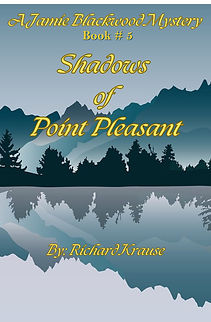A Short history of diamonds...........
- Richard Krause
- Sep 17, 2018
- 5 min read
Good morning to all you wonderful people out there. I hope you are having a fabulous day and have had your morning ratio of the elixir of life. I am still in the process of refilling my veins with the wondrous brew myself, but am just about alive again.
Today I think we are going to touch base on the subject of diamonds. It seems like a BRIGHT way to start out the week! So without further a due let’s look at:
A Short history of diamonds
When did diamonds first become recognized as precious stones and used for jewelry? The earliest reference to them has been found in a Sanskrit document dated around 300 BCE. They were associated with the gods and were used to decorate religious icons and statues. In India, only kings, the highest caste, were allowed to own them.
Although diamonds were traded east and west of India, they were still prized in their natural crystal state, or polished to increase the shine and luster of them. The first guild of diamond cutters was established in 1375, and it was then that the practice of cutting the stones and faceting them was developed. So if someone wants to sell you a diamond from the ancient times that is cut in a beautiful Princess cut, they are lying to you! Keep that in mind.
From the earliest times, diamonds were the province of kings and queens. In fact, in the 13th century, Louis IX of France decreed that only royalty could own diamonds, a dictate which faded away about 100 years later. By the late 15th century, they were used as wedding rings.
The largest diamond ever found was a 3106-carat diamond discovered in 1905 in a mine owned by Thomas Cullinan, for whom the stone was made. It was cut into smaller stones, the largest being made into the 530-carat Great Star of Africa diamond, cut by the Asscher Brothers, a famous diamond firm to this day. It’s also called the Cullinan I diamond, and is set in the Scepter of the Cross of the United Kingdom. A smaller stone cut from the Cullinan diamond is called the Lesser Star of Africa. It weighs 317 carats and is part of the Imperial State Crown. Both gems can be seen as part of the British Crown Jewels which are displayed in the Tower of London. The rest of the Cullinan diamond was cut into 11 smaller-weight stones and a number of fragments.
While the Cullinan diamond is the largest diamond ever found, there is a rumor that the man who discovered the diamond actually broke off part of the diamond before presenting it to the mine’s owner. This diamond, if the rumor is true, would have been 5,000 carats! We are talking about a hell of a “rock” there!
The Hope Diamond
Is there anyone who hasn’t at least heard of the famous Hope Diamond? Many people are surprised when they first learn that this famous stone isn’t a clear diamond, but instead is a brilliant blue stone, surrounded by white diamonds and suspended from a diamond necklace.
It first appears in history in the mid 1600s when it was purchased by a merchant named Jean Baptiste Tavernier, who sold the stone to Louis XIV of France. At that time it was a 112-carat stone, described as having a beautiful violet color. It was recut into a 67-carat stone and the color was named French Blue. During the French Revolution, the diamond was stolen during a looting of the crown jewels. It reappeared in 1812, but recut once again and was acquired by George IV of England who had to sell the stone to pay off debts. The exact transaction is unknown, but the diamond is next found as an entry in the collection of Henry Philip Hope, whose name is attached to the diamond to this day.
Eventually the stone was owned by the Cartier jewelry firm in Paris and purchased by Evalyn Walsh Maclean of Washington, DC. It was at her request that the stone was reset and made into the necklace that we know of today. It was acquired by Henry Winston who purchased it from Mrs. Maclean’s estate in 1947 and eventually became part of the Smithsonian Collection.
There is a long-standing legend of a curse attached to the Hope Diamond, which the story says was plucked from an idol in India. True or not, many who have owned the Hope Diamond have met with misfortune, including the Hope family, who supposedly went bankrupt from owning the diamond. It’s possible that the whole concept of the curse originated with Pierre Cartier who sold it to Mrs. Maclean with the story of a curse, because she thought objects surrounded with bad luck were actually good luck for her. Sadly, Mrs. Maclean’s first son was killed at age 9 in a car accident and her 25-year old daughter committed suicide. Her husband was declared insane and was institutionalized until his death in 1941. Was it part of a curse?
And then there is;
The Napoleon Diamond Necklace
One of the most spectacular all-diamond pieces of jewelry in the Smithsonian Insitution is the Napoleon necklace. Thought to have originally been owned by Catherine the Great of Russia, it was presented by the Emperor Napoleon of France to his second wife, Marie-Louise of Austria on the birth of their son in 1811. The silver and gold set necklace contains172 diamonds weighing 275 carats - 28 oval and cushion-cut diamonds, dangling 19 briolette-cut oval and pear shaped diamonds and accented by small, round diamonds and diamond set motifs in a silver and gold setting. The diamonds are cut in "old mine" style, the precursor to the modern brilliant cut, and have a high degree of fire (flashes of color as the stone moves in light), but less brilliance due to less light refraction through the top of the stone.
The necklace has an estimated total gem weight of 275 carats, and the largest single diamond on it weighs approximately 10 carats. When Marie-Louise died in 1847, the necklace was given to her sister-in-law, Archduchess Sophie of Austria, who removed two stones to shorten the necklace. Earrings were made with the two removed stones, the whereabouts of which are unknown.
In 1872, the necklace was bequeathed to the Archduchess' son, Archduke Karl Ludwig of Austria. In 1948, Archduke Ludwig's grandson, Prince Franz Joseph of Liechtenstein, sold the necklace to a French collector who then sold it to Harry Winston in 1960. Marjorie Merriweather Post obtained the necklace from Winston and donated it to the Smithsonian Institution in 1962.
It’s difficult to value a piece like this in today’s market. However, in 1993, the auction house Christie’s in Geneva sold another necklace that Napoleon had given to Marie-Louise that was composed of rubies and diamonds. This necklace sold for $13 million.
Well I think that about covers it for today. I hope this has BRIGHTENED up you day a bit. I personally feel it was a CUT above the rest.
May the Great Architect of the Universe watch over you and keep you safe as you travel down your path of life today. And may his light ever shine down upon you.






















Comments